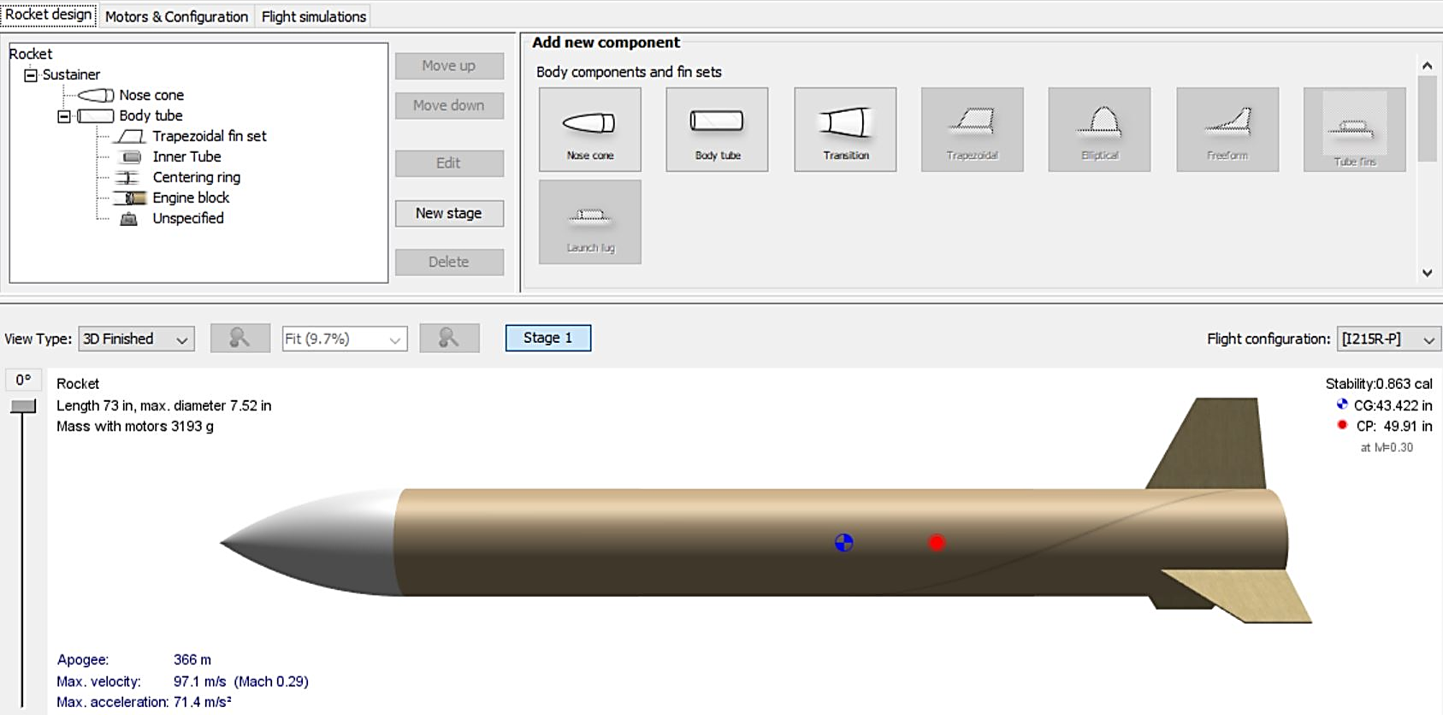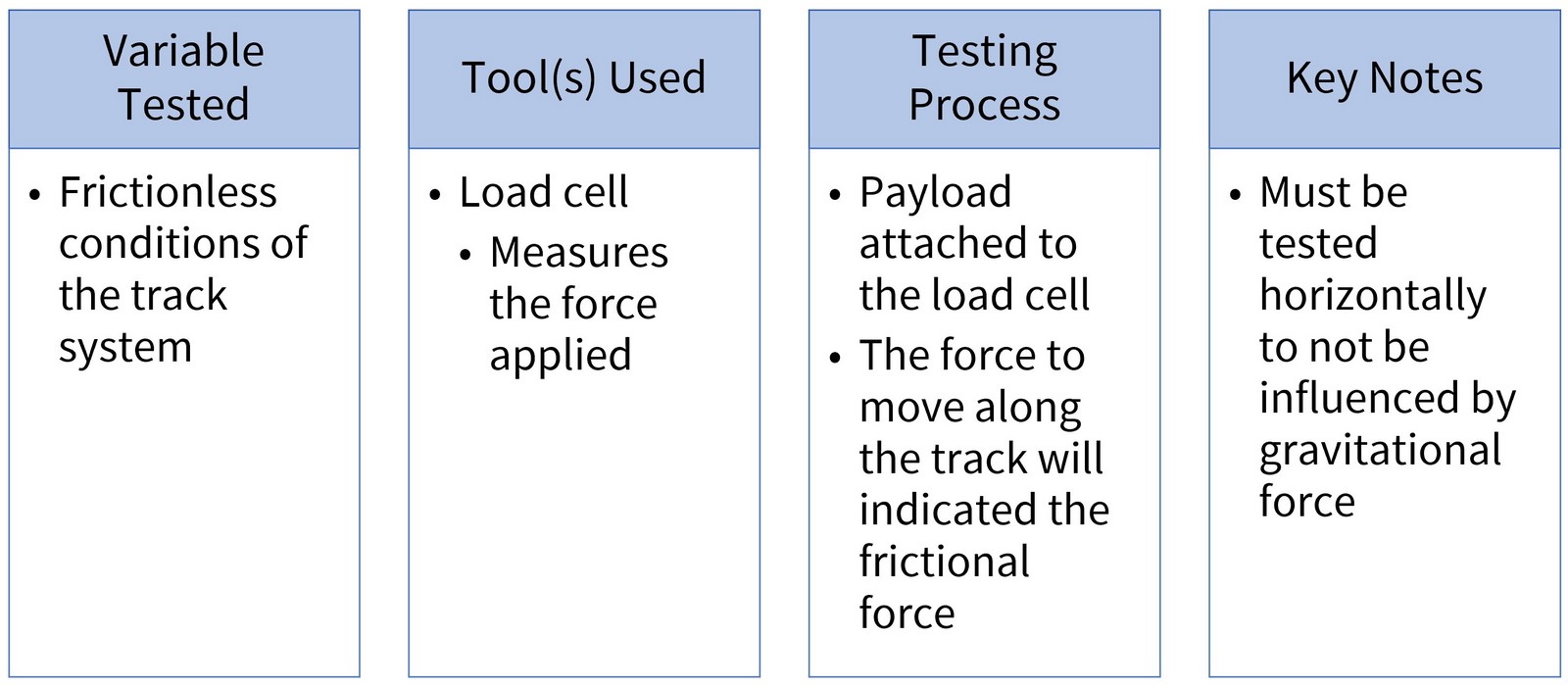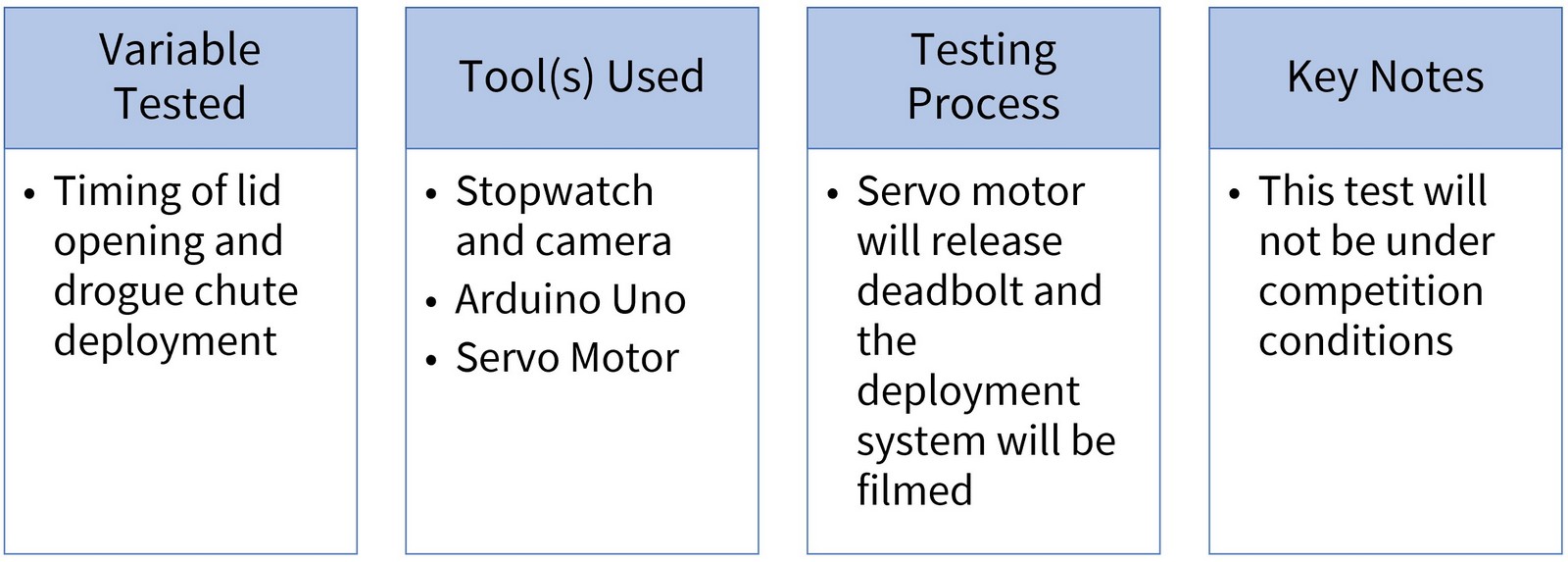



As exploring space grows in popularity, understanding zero gravity conditions becomes more and more important. Zero gravity, also known as microgravity, provides challenges in matters where Earth’s gravity is taken for granted. Tests are performed to solve issues that occur due to the lack of gravity. We are engineering an air vehicle that will be dropped from a drone, provide zero gravity conditions to a package inside the vehicle , and fall safely to the ground. Alternately, drop towers are used to simulate zero gravity for packages to experience free fall. Because of the small number of drop towers around the world, an easier method to conduct these tests is desired. Our team is creating a missile shaped vehicle, helpful for limiting the force that the surrounding air would provide as the vehicle falls. This force is the main issue that limits zero gravity conditions, as it creates an undesired acceleration. Our solution is to include a track for the package to move on inside the vehicle. The outside of the vehicle will slow down when the force from air acts against it, but the package will remain in zero gravity because it is free to move on the track. To increase the duration of the event, compressed water is used to propel the air vehicle down. The position of the package on the track inside the vehicle will determine when the compressed water will be released. After the test is complete, a parachute is deployed for the vehicle to descend safely to the ground. Our air vehicle is reusable and easily operated. This is a huge step for space exploration as the process of preparing for space’s atmosphere is quickened.
View our project's history from the beginning.
project scope target summary Customer Needs concept generation target catalog concept selection project plan Functional DEcomposition


Florida State University
Advisor

Florida Space Grant Consortium
Sponsor
created with
Static Website Generators . The body must be in freefall, meaning gravity is the only force acting on it. Since drag force is unavoidable, a thrust force must be generated to counteract it.
Normal falling object FBD:
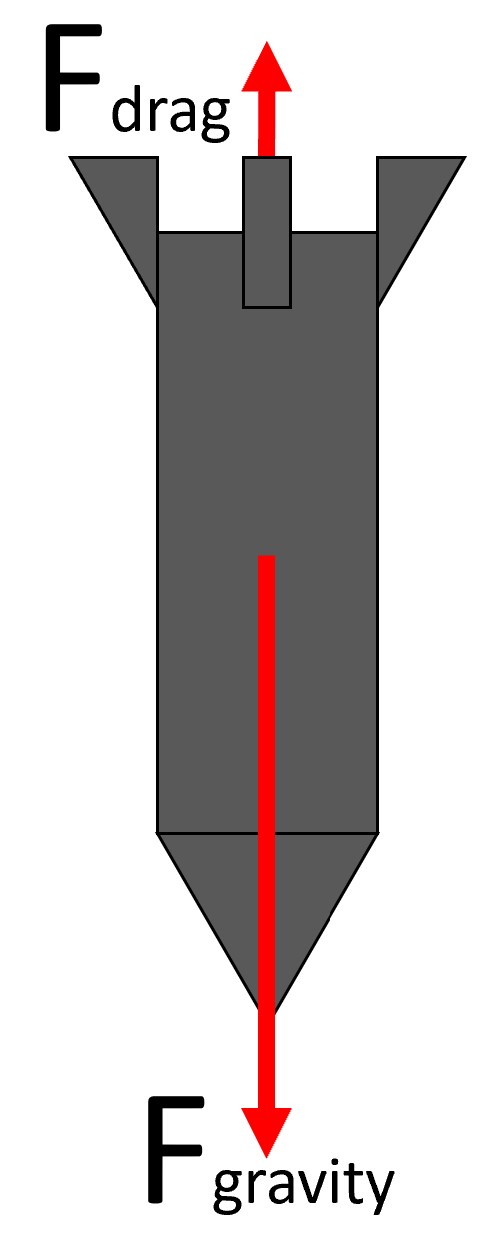
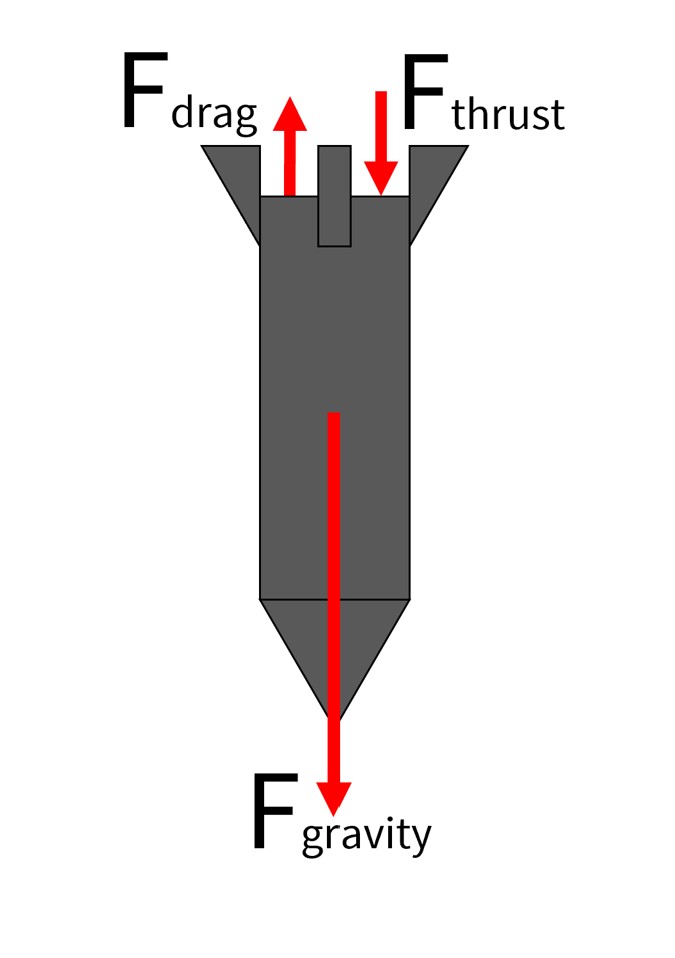
FBD to achieve microgravity:
To counteract drag force, we will have thrust emitted from 3 nozzles, symmetrical about the nose cone. The nozzles will direct the thrust at a 10 degree offset angle, or tangentially from the nose.

While the goal is for the track system to be frictionless, that's much too difficult to achieve under our circumstances. This FBD displays the small amount of damping force at each connection point between the holster and the track. It will be small enough to be considered negligible though.

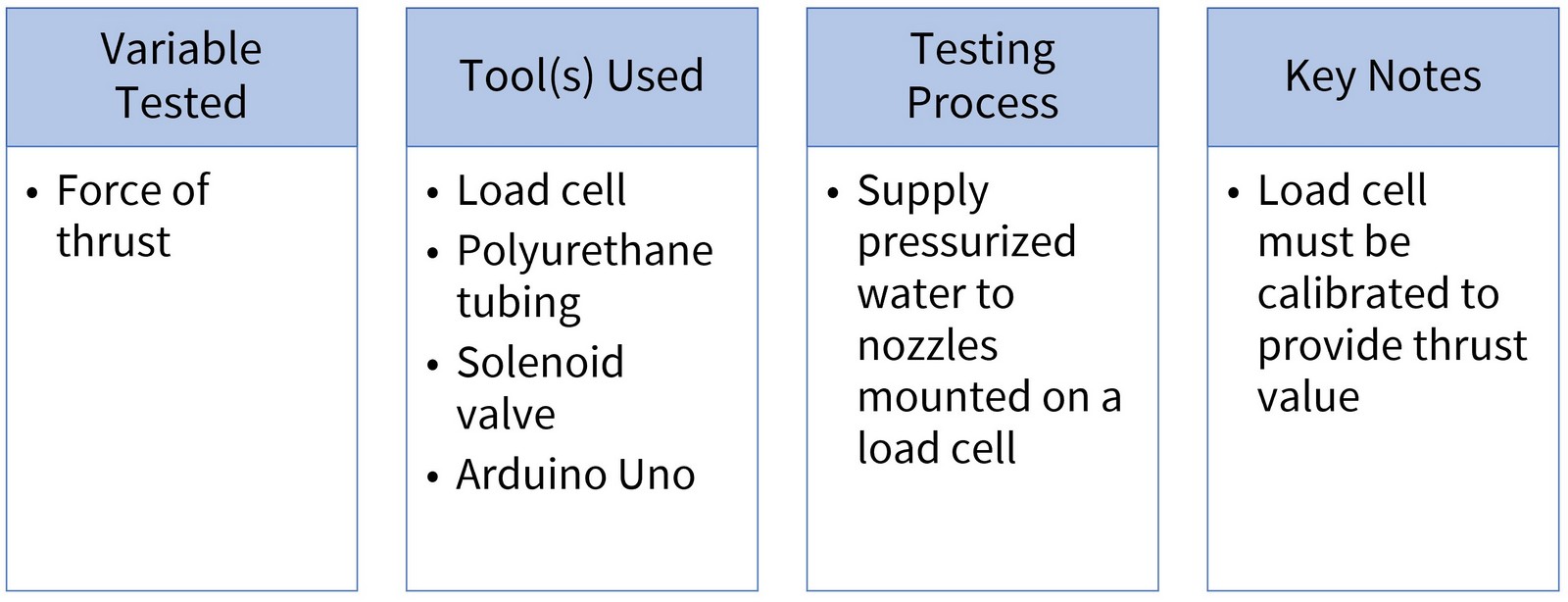

Exterior Testing: An online simulation, Open Rocket, was used to find the optimal design for the external body. Various combinations of sizes and shapes were tested to find the smallest resultant drag force.
